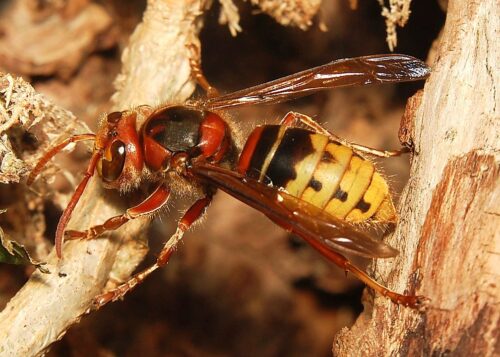The European hornet belongs to the true wasps and is common in Europe and North America.
Also known as:
Giant hornet
Brown hornet
Do not confuse with:
Hornet mimic hoverfly (Volucella zonaria)
European hornet (Vespa crabro). The 3.5 cm long hornet belongs to the true wasps (Vespinae) and is common in Europe and North America. European settlers brought the European hornets with them in the 1800s. Unlike common wasps, hornets are not very numerous.
The European hornet catches large quantities of insects to feed its larvae. The hornets themselves live on sugar-rich plant juices.
Hornets primarily prey on flies and mosquitoes, sometimes honeybees, butterflies and caterpillars. Spiders are also on the menu.
Among the birds of prey, the European honey buzzard (Pernis apivorus) is a formidable enemy of hornets.
Hornets, like other wasp species, live only one summer – they do not survive the winter. This is not the case for the queen, she is the only one to hibernate and come out of hibernation in April and start a new nest. The nest is made from fibers of dead deciduous wood. A nest can be anywhere: clumps of grass, in a birdhouse, a hole in the ground, sheds and under roofs.
Hornets are not aggressive unless one gets too close to the nest.
Where to find
- Common in Europe and North America.
Control
Controlling is not necessary unless there is a nest in the vicinity. Leave the removal of a nest to a professional company.
Prevention
Does not apply.

